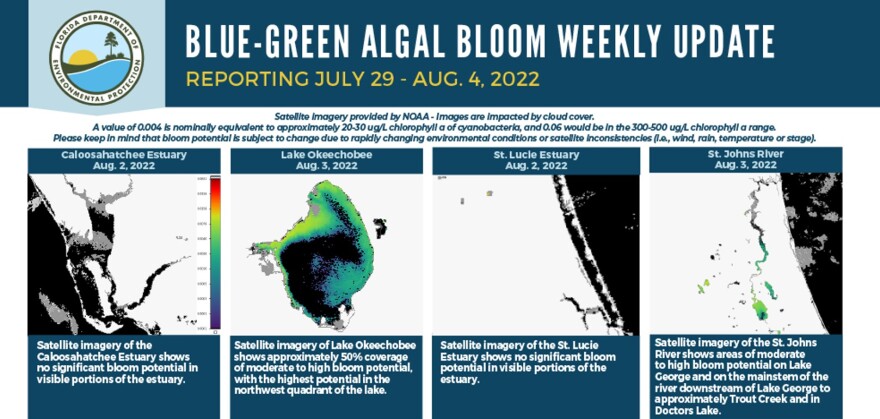Monday August 8, 2022: The satellite imagery for Lake Okeechobee from August 3 shows approximately 50% coverage of moderate to high bloom potential, with the highest bloom potential in the northwest quadrant of the lake. The satellite imagery for the Caloosahatchee and St. Lucie estuaries from August 2 shows no significant bloom potential in visible portions of either estuary.
The Florida EPA reports 51 site visits between July 29 and August 4 and 51 samples collected. Algal bloom conditions were observed in samplers at 25 sites.
Ten of the Lake Okeechobee stations were dominated by Microcystis aeruginosa, 15 of the Lake Okeechobee stations had no dominant algal taxon, and only the POLESOUT station was co-dominated by Cylindrospermopsis raciborskii and Planktolyngbya limnetic. Algal bloom conditions were visible to the samplers only at stations L005 and LZ40.
On August 1 the South Florida Water Management District (SFWMD) staff collected samples from the C43 Canal – S77 Structure (upstream) and the C43 Canal – S79 Structure (upstream). Neither sample had a dominant algal taxon nor cyanotoxins detected.
Keep in mind that bloom potential is subject to change due to or satellite inconsistencies, or rapidly changing environmental conditions like wind, rain, or temperature.


